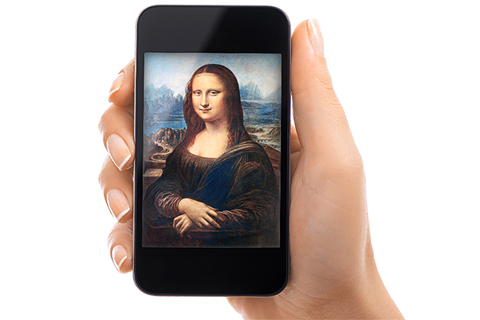One of Canada’s leading visual arts journalists, Sara Angel, has long been fascinated by the way that art finds its audience. With the rise of the Internet, she says, “more people have an understanding and awareness of what the art world is about than ever before.” They can take virtual walks through the Tate in London or the Uffizi Gallery in Florence, Italy; they can view Internet-specific art only meant for online eyes. And this, says Angel, has left museums and galleries with the challenge of defining their role in the world.
Now pursuing a PhD in art history at U of T, Angel has received a $60,000 scholarship from the Pierre Elliott Trudeau Foundation to examine the interface between media and art, and particularly the impact of communications technology. While she’s still researching her thesis, Angel expects she’ll find more museums and galleries harnessing technology to open their doors to a wider audience. She’s curious, however, whether their role in the art world is changing. “Online traffic does drive real-life traffic,” she points out. “It’s not a situation where people say, ‘I’ve seen the Mona Lisa on my phone, so I don’t need to see it in real life.’”
Angel has already found some museums that are adapting well to the new age. She welcomes innovations such as the Art Gallery of Ontario’s Grange Prize for photography, awarded by online voters instead of curators, and, in New York, the Metropolitan Museum of Art’s plans for an “augmented reality” feature, which would allow in-person visitors to scan information about artworks on their mobile devices.
Her grant will also let her investigate the new ways visual art is being made and seen outside institutions. Angel cites the example of Nuit Blanche, an international, overnight event that enables artists to display their work at public places in a given city. It’s strongly linked to social media, as participants post messages about the best work they’ve seen over the course of the night.
Angel calls Nuit Blanche “the museum of the 21st century,” and she believes that free and social events of this type are wildly boosting art’s popular appeal. “We’re in the middle,” says Angel happily, “of a complete revolution.” And it’s giving her plenty to explore.
Recent Posts
U of T’s Feminist Sports Club Is Here to Bend the Rules
The group invites non-athletes to try their hand at games like dodgeball and basketball in a fun – and distinctly supportive – atmosphere
From Mental Health Studies to Michelin Guide
U of T Scarborough alum Ambica Jain’s unexpected path to restaurant success
A Blueprint for Global Prosperity
Researchers across U of T are banding together to help the United Nations meet its 17 sustainable development goals






